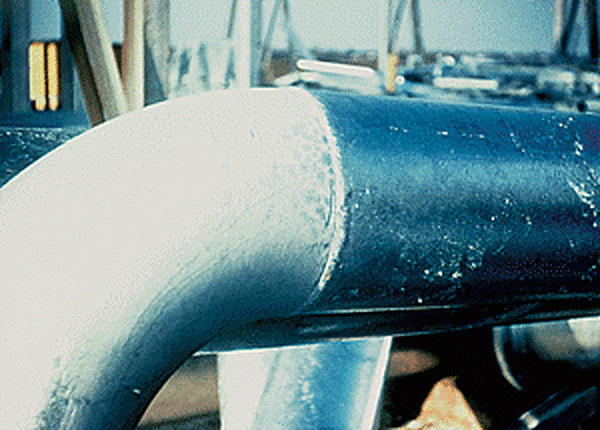Steel Surfaces

An essential component in creating high-quality galvanized coatings is proper steel surface preparation. Steel must be near white metal clean for the metallurgical reaction between iron and molten zinc to occur while in the galvanizing kettle. Some common residues found on steel as well as surface conditions such as rough surfaces, heat-treating induced surface coatings, rust, and other contaminants need to be removed prior to galvanizing, as they may inhibit the formation of a consistent, uniform zinc coating.
It is important to understand the following:
- Rough steel surfaces resulting from fabrication methods or abrasive cleaning processes may cause thicker zinc coatings.
- Casting surfaces must often be abrasively cleaned to remove sand that will prevent zinc adhesion.
- Heat-treating steel often introduces a surface coating not removed by conventional chemical cleaning processes and must be blast-cleaned.
- Steel surfaces that have varying degrees of rusting require varying amounts of time in the cleaning stages of the galvanizing process, resulting in a variety of surface finishes.
- Welding slag adhered to the steel surface must be removed prior to galvanizing.
- Welding slag adhered directly onto the weld is easily removed by grinding; welding slag adhered around the weld areas is more difficult to remove and usually cannot be ground away; other means of mechanical removal, such as blasting, are used to remove this type of welding slag.
- The use of cutting oil should be minimized when planning to galvanize; if cutting oil use is unavoidable, the galvanizer should be consulted to determine if normal chemical cleaning processes will remove it from the surface or if another means of removal is necessary.
When welding steel, flux and molten metal particles (weld slag) may splatter away from the weld pool and adhere to the steel. Although these particles are commonly found on welded steel, they must be removed prior to galvanizing, because the standard chemical cleaning processes used by galvanizers do not remove welding slag. Additionally, if welding slag particles are carried over to the zinc bath, they will cause coating defects and areas that may be susceptible to corrosion problems. Welding slag particles not removed may lead to exposed areas unprotected from corrosion.
